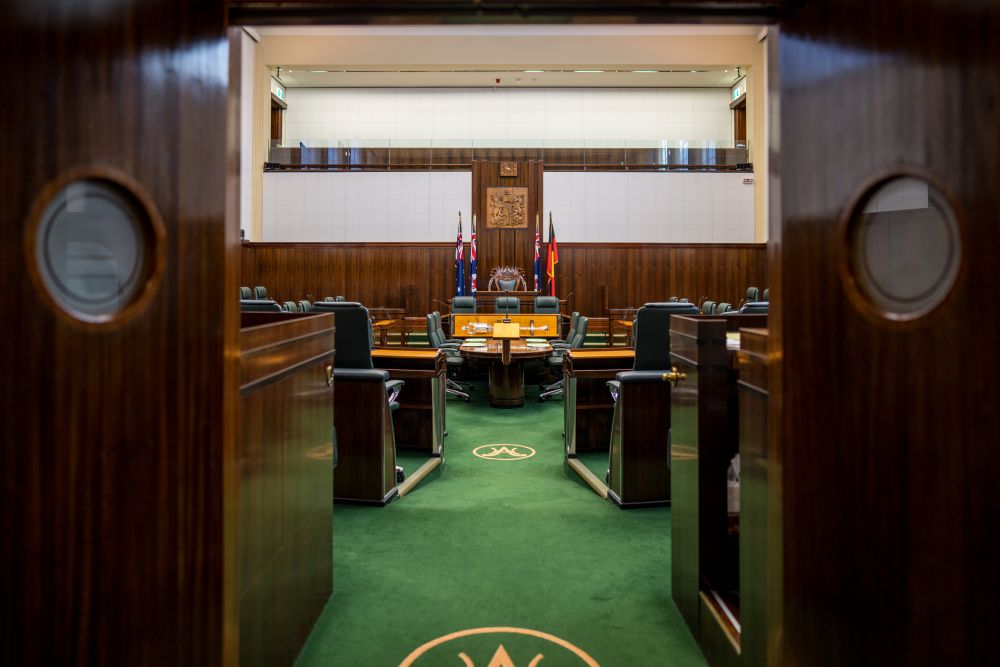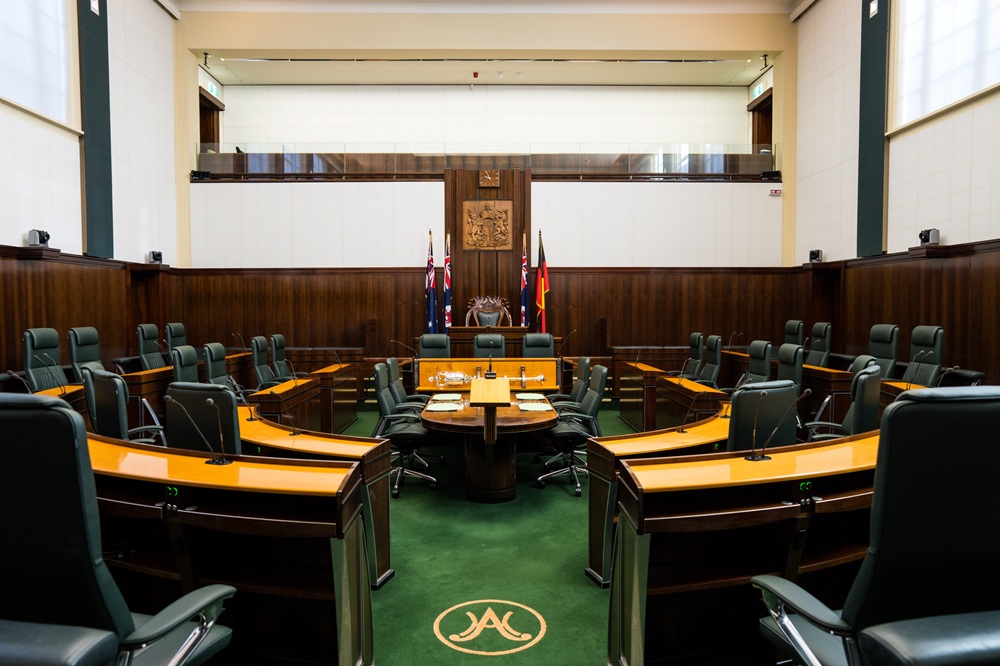.
.
.
Petitions enable the public to have issues they care about voiced in the Parliament, and to request a course of action to address their concerns.
Anyone who is resident in Tasmania can start or sign a petition: There are no restrictions based on citizenship, age or number of signatures.
All that is required is for the petition to follow the rules of the House of Assembly and for a Member to agree to sponsor it.

Petitions can be prepared on paper, as an e-petition, or as both.
The process is slightly different for e-petitions and paper petitions.
Information for e-petitions is available through the link, right.
This page will explain the process for running a paper petition.
Setting up a Petition
Gathering signatures for a particular cause is one of the most traditional ways the public has to put their views forward and request an outcome from the Parliament. The right of petitioning Parliament is a fundamental right of the citizen. The House of Assembly will receive petitions presenting public or individual grievances on matters over which it has jurisdiction.
The rules governing Petitions that can be accepted by the House are contained in the Standing Orders of the House of Assembly. These are designed to ensure that the authenticity of petitions is established and consequently provide protection of purpose for the petitioner and House alike.
In essence, they outline that petitions:
Must be clearly written or printed, without any additions or alterations
Have both the text of the petition and at least one signature on each page.
Are to be addressed to the Speaker and Members of the House of Assembly.
Should first outline the facts which the petitioners wish to bring to the notice of the House
Conclude with a request that the House do - or not do - something. Often, this may be for the House to call on the Government to take some course of action which is under their jurisdiction.
Can not have any attachments.
Any petition not in English must be accompanied by a translation certified to be correct. The Member must certify that the translation is correct.
Please also note that signatures must be made on a page bearing the full text of the petition, and can not be transferred or photocopied.
Presenting a Petition
For a petition to be presented to the House, a Member must agree to assist. There are no rules about which Members you should ask: You might ask one because it's an issue in your shared local area, or something they're passionate about too. It could even be a concern they disagree with, but are willing to present in their role as your representative. The below links can assist in finding a Member to sponsor your petition.
Once a Member has agreed to sponsor a petition, the original signed petition papers need to be provided to them. Information for Members for arranging for a petition to be presented is below.
Petitions are presented in the House on sitting days after Question Time. The text of the petition is read aloud to the gathered Members and the number of signatories is stated. The text in the petition is then sent to the Government for a response and the petition itself becomes part of the permanent record of the Parliament.
Frequently Asked Questions
A Member of the House of Assembly will need to agree to sponsor your petition and present it to the Parliament. However, you can start a petition yourself and find a Member to sponsor it afterwards.
This is different to e-petitions, where a Sponsoring Member is required to establish an e-petition.
All petitions will need to conform with the rules of the House, and Members may be able to help ensure your petition does this and can be presented to the Parliament.
Petitions to the House of Assembly need to be on a subject relevant to the House and request action the House can take. Often, this action might be to call on the Government to act in a certain way, as the Government or executive may have responsibility for directing certain programs or policies, rather than the House as part of the legislature.
It is also important that petitions are respectful and restrained in their language and must not contain irrelevant statements. In particular, reflections must not be cast upon the monarch, the Governor, members of the judiciary, or Members of Parliament. Petitions must also not impugn the character or conduct of Parliament, the courts or any other tribunal or constituted authority.
There is no time limit for how long a paper petition can be circulated.
With regards to the timing of a petition, please note it is required that direct references shall not be made in a petition to any Debate in Parliament conducted within the previous twelve months, unless it is a request to repeal a Bill or a vote be rescinded.
A petition might describe the group presenting it, for example residents of a particular town or area, or it might refer to all residents of Tasmania. There are no limitations based on age or citizenship.
A petition is received only as a petition of the individuals signing it, not on behalf of a group. One person may only sign on behalf of another individual if that individual is incapable of signing and has consented to their signature being placed on the petition.
A petition of a corporation aggregate is required to be made under its common seal. If it is not, but is otherwise in order, it may be presented simply as the petition of the individual(s).
Petitions can be presented on any sitting day of the House, as agreed with the Sponsoring Member.
Petitions are presented after Question Time, which typically concludes around 11.15 a.m. Members of the public are welcome to watch from the public gallery whenever the House is sitting. Please allow time to pass through security.
The text of all Petitions received by the House are sent to the Premier. It is then forwarded to the responsible Minister who must table in the House a Government response to the Petition within 15 sitting days of it having been received by the Premier.
This response will be published on the Parliament's website as a Tabled Paper, and sent to the Sponsoring Member.
Petitioners sign and place their name and address on petitions.
These details are not published and are not included in the copy of the petition sent to the Government for a response. The petition as presented to Parliament is retained as part of the permanent record of the Parliament.
Please contact haprocedure@parliament.tas.gov.au for further information.
Members
A petition is presented to the House by a Member on behalf of the petitioners. It is traditional that the Member to whom the petition is sent for presentation will present it, irrespective of their personal views on its contents. However, the Member is not bound to do so.
A petition for presentation must be lodged with the Clerk of the House at least one hour prior to the sitting at which the petition is proposed to be presented.
Each petition lodged for presentation must be endorsed at the beginning of the petition by the Member presenting it with the first page having on it:
the Member's signature, where it cannot be confused with the signatures of the petitioners;
the name of the Member's electoral division; and
the number of signatories to the petition.
Any petition not in English must be accompanied by a translation certified to be correct. The Member must certify that the translation is correct.
If there is an accompanying e-petition, please let the Clerk of the House know.
A script to use in tabling the petition/s will be provided.
For further information, please contact the Clerk of the House.

